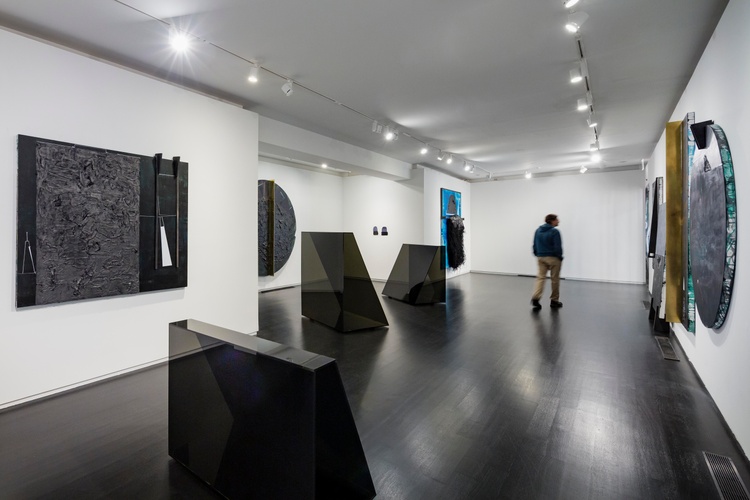A
AIA CES Credits
AV Office
321M Fayerweather Hall
Abstract Publication
415 Avery Hall
Academic Affairs
400 Avery Hall
Academic Calendar, Columbia University
Academic Calendar, GSAPP
Admissions Office
407 Avery Hall
1172 Amsterdam Avenue
New York, New York 10027
Advanced Standing Waiver Form
Must be printed and returned to 400 Avery Hall
Alumni Board
Alumni Office
405 Avery Hall
1172 Amsterdam Avenue
New York, New York 10027
Architecture Studio Lottery
Assistantships
Avery Library
300 Avery Hall
1172 Amsterdam Avenue
New York, NY 10027
Avery Review
Avery Shorts
B
Black Student Alliance at Columbia GSAPP
Building Science & Technology Waivers
Bulletin Archive
C
Career Services
300M Avery Hall
Columbia Books on Architecture and the City
Commencement
Communications Office
415 Avery Hall
Conversations podcast
Counseling and Psychological Services
Courses
Credentials Verification
Credit Transfer
Cross Registration
D
Dean’s Letter
Dean’s Office
402 Avery Hall
1172 Amsterdam Avenue
New York, NY 10027
Development Office
404 Avery Hall
Directory of Classes (All Columbia University)
Disability Services
Dodge Fitness Center
3030 Broadway Dodge
Dual Degree Program Requirements
E
End of Year Show
Events Office
415 Avery Hall
External Funding Sources
F
Faculty Directory
Feedback
Finance Office
406 Avery Hall
Fitch Colloquium
Future Anterior Journal
G
GSAPP Community Fellowship Program
GSAPP Emergency Fund
GSAPPX+
Grades
Graduation
Graphics Project
H
Honor System
Human Resources
Hybrid Pedagogy Resources
I
IT Helpdesk Ticket, GSAPP
IT Office, GSAPP
IT, Columbia University (CUIT)
Identity
Incubator Prize
International Students and Scholars Office (ISSO)
N
News and Press Releases
Newsletter Sign Up
Non-Discrimination Statement and Policy
O
Onera Prize for Historic Preservation
Online Admissions Application
GSAPP Admissions 407 Avery Hall
Output Shop
116 Avery Hall
1172 Amsterdam Avenue
New York, NY 10027
Ownership of Student Work Policy
P
Paris Prize, Buell Center
Paul S. Byard Memorial Lecture Series
Percival & Naomi Goodman Fellowship
Plagiarism Policy
Policies & Resources
Press Releases
Publications Office
415 Avery Hall
1172 Amsterdam Avenue
New York, New York 10027
R
Registration
Registration: Add / Drop Form
Room Reservations
S
STEM Designation
Satisfactory Academic Progress
Scholarships
Skill Trails
Student Affairs
400 Avery Hall
Student Awards
Student Conduct
Student Council (All Programs)
Student Financial Services
Student Health Services at Columbia
Student Organization Handbook
Student Organizations
Student Services Center
205 Kent Hall
Student Services Online (SSOL)
Student Work Online
Studio Culture Policy
Studio Procedures
Summer Workshops
Support GSAPP
1919: Black Water
Arthur Ross Architecture Gallery, Buell Hall
Combining expressive mark making and geometric abstraction, New York-based artist Torkwase Dyson (b. 1973, Chicago) works in painting, sculpture, drawing, and performance. She creates visual and material systems that explore relationships between bodily movement and architecture, with an emphasis on the ways that black and brown bodies perceive and negotiate space. Throughout her work, Dyson considers forms of environmental justice from historical and contemporary perspectives, seeking to uncover new understandings of geography and belonging.
For her exhibition 1919: Black Water, Dyson presents new paintings, sculpture, and drawings that respond to the 100th anniversary of the “Red Summer” of 1919, a period of heightened racial violence across the United States. Her point of entry is a tragic episode that unfolded in the segregated waters of Chicago’s South Side beaches. On July 27, 1919 five black teenagers went swimming in Lake Michigan with a homemade raft and drifted near the unmarked boundary that extended from the black and white beaches. As tensions between black and white beachgoers erupted on the shore, a white Chicagoan assaulted the boys in the water, throwing stones at them. One of the boys, Eugene Williams, was struck in the head and drowned. Upon news of his death, violence escalated on the beach and intensified when a white police officer refused to arrest the man responsible for the boy’s death, yet arrested a black man upon complaints from a white man at the scene. Over the next five days rioting and racial attacks spread throughout Chicago.
The story of Eugene Williams offers Dyson a historical framework to think through the relationship between race, climate migration, and the architectural imagination. She contemplates the industrial waste that flowed into the water where the boys swam, which warmed and cooled the lake, and the raft they built from infrastructural debris to navigate its “hot” and “cold” zones. For Dyson, the raft—designed and constructed by the boys—is an architectural structure of extraordinary significance: a space of refuge, but also a space of liberation. Attending to these modulations of temperature and spatial agency, her paintings and drawings incorporate cumulative layers of washes, colors, textures, geometric markings, and sculptural modules, while an abstract sculpture grapples with the interstitial political and environmental conditions that the boys on the raft created and occupied.
The exhibition advances Dyson’s research on the ways that water, historically and in the present, operates as a contested geography and how climate change disproportionately affects people of color around the world. It connects her interest in emerging discourses on the plantationocene with her idea of “Black Compositional Thought,” a working term that considers how spatial networks—paths, throughways, water, architecture, and geographies—are composed by black bodies and how the attendant properties of energy, space, and objects interact as networks of liberation.










